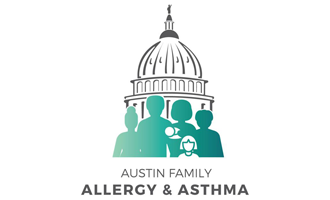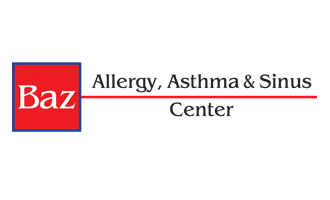Allergy Overview
Allergic symptoms occur when a sensitive person is exposed to a normally harmless substance. Upon exposure, a susceptible person may develop hay fever, asthma, hives, swelling, eczema, intestinal symptoms, or even shock in extreme cases. Substances capable of causing allergy symptoms are called allergens. Exposure to an allergen causes symptoms due to the release of histamine and other allergic chemicals from specialized white blood cells at the site of exposure (eyes, nose, throat, skin, lungs, etc.).
The allergic tendency (atopy) is inherited, thus allergies run in families. Allergic symptoms may develop at any age depending on the frequency and quantity of exposure. Many people develop allergic problems after living in central Texas for a period of time. The mild climate and high humidity in Austin cause high levels of pollens and molds throughout much of the year. Cedar pollen from December through February may be especially severe.
ALLERGENS
A tremendous variety of allergens may cause symptoms in a sensitive person. Allergens may be divided into several groups:
INHALANTS (pollens, house dust, animal dander, mold);
INGESTANTS (foods, beverages, drugs);
INJECTED SUBSTANCES (drugs, vaccines, insect venoms).
Other factors such as infections, changes in weather, or exposure to irritants (tobacco smoke, pollutants, etc.), may trigger or worsen allergic symptoms.
TREATMENT
There are three fundamental ways of treating allergic individuals:
AVOIDANCE
If allergens can be completely avoided, no symptoms will occur. Unfortunately, most allergens are impossible to avoid completely. Avoidance measures are most practical for indoor allergens such as pets and house dust mites, and for food and drug allergy.
MEDICATION
Many OTC medications are available for controlling allergic symptoms. Prescription nasal sprays, lung inhalers, and oral steroids are also utilized when necessary, especially for asthmatics. All medications have side effects and do not affect the underlying allergic sensitivity and symptoms may recur when medications are stopped.
IMMUNOTHERAPY
Immunotherapy can be in the form of injections or oral drops. Immunotherapy consists of giving you the thing you are allergic to (e.g. cedar pollen), in extremely small amounts. Over time, the intake of increasingly stronger concentrations leads to a gradual reduction in allergic symptoms (called tolerance). After several months, most people generally feel better and start to need less medication. A 4 to 5 year course of allergy shots often results in reduced symptoms for years for 7-10 even after stopping. Allergy shots can almost eliminate the possibility of life-threatening reactions in people allergic to insect venom or fire ant stings. Immunotherapy is not available for food or drug allergy at this time.
Austin, Texas:
Live Music, and unfortunately, Allergy Capital of the World!
Many places in the United States claim the title of “allergy capital” because people in the area suffer significant symptoms. Austin is usually rated in the top five for worst places for allergies. Different geographic regions have different predominant pollens and seasons. For instance, in the Midwest, fall “hayfever” (caused by ragweed pollen) may be especially severe in August and September until the first freeze. In fact, most of the U.S. has fall (weeds) and spring (trees and grass) pollen seasons.
Austin is unique in having three distinct pollen seasons. In the fall, ragweed and other weeds release pollen from mid-August to early November. This season is much longer than in other parts of the country. In the spring, Oak, Ash, Elm and Pecan trees pollinate from February to early June. Grasses pollinate from March through September. The hot, dry, summer weather often kills off much of the grass, so some years there is very little pollen in July and early August.
In the winter, Mountain Cedar pollen season extends from December to February; this allergy season is unique to Central Texas. Cedar pollen counts in Central Texas are the highest pollen counts of any plant anywhere in the world. Cedar allergy, referred to as “cedar fever,” can be intense and debilitating. On days of very high pollen counts, many cedar allergic people can’t go outdoors without experiencing severe symptoms. Some people must miss work or school and can’t get good control of their symptoms despite taking lots of medication.
Our providers at the Austin Family Allergy & Asthma invite you to call us at (512) 346-7936 to arrange a visit.
Whatever your allergy or asthma problem, we can help.




